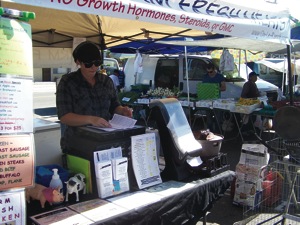
With the LGBT consumer and business market no longer stereotyped as full of affluent “DINK” (double-income, no kids) households, companies are finding they have to do more than just be located in a historically LGBT neighborhood, and throw an occasional advertisement in a local LGBT publication to keep community shoppers buying. To build back declining favor, or to build on momentum in gaining LGBT customers, at least three local businesses have decided to re-examine the way they do business, revamp their operations and branding, and, once all was in place, relaunch.
Recreating a business is often necessary as a way to survive touch economic periods such as the one the nation has been in since 2008. As a result of the economic downturn and as a response to trends and buying habits that have shifted in the marketplace, many companies have faced the proposition of change fast or die soon. What was once a successful local brand can all too quickly garner a tired and outdated public appearance in need of updating. As competitors, new and old, adapt by refreshing their own offerings and branding to fit the times in pricing and products, sometimes drastic and severe changes are called for.
However, the positive consequences for a business can be considerable, including revamping the look of the business and the chance to set new objectives while exploring new market opportunities and money-making approaches. In addition, business is often seen as being in a state of constant change, evolving and adapting to market conditions as demands and buying trends dictate.
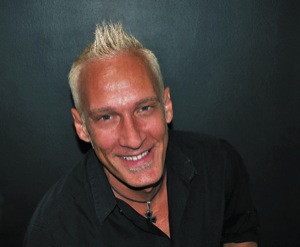
The Hairspray Hair Salon in Hillcrest, co-owned by Annie Hartigan and Leeland Tatta, is one such local example, revamping in May but with an official relaunch Dec. 3, highlighted by a catered party starting at 7 p.m.
Says Tatta, “We needed a fresh new look. We didn’t need all the space and we designed a new logo. We needed to update the look to keep up with the times. Now we have a modern industrial look.”
Has the redesign helped business? “Incredibly,” says Tatta. “We revamped the whole salon. The whole look is different and we got new personnel. One of the old owners left and I came in as a partner. Interestingly, and probably because I am gay myself, we are getting more support from the gay community.”

For Tatta, the main problem in redefining the Hairspray brand was financial. “I guess the biggest challenge really was also because we sliced the salon in half but kept the same amount of employees. So people thought we were closed.” For Tatta, budget is the biggest risk for businesses. “Be careful of your budget,” he says. “We stayed within ours but you have to have a plan.”
For the Hairspray salon, bringing down the overhead was the initial impetus for the revamp. Adds Tatta, “We saved a ton of money. We have the same number of employees, but we just condensed into a smaller space. Our clients love it … and we serve wine!”
The North Park Farmers Market is another example of a local business entity that sought to re-establish itself in the marketplace with a relaunch and a makeover nearly a year ago. Says Catt White, market manager, whose SD Weekly Markets company took over management of the market, “We rearranged the market and brought in additional farmers as well as food vendors, increasing the ratio. We applied for a permit to close Herman Street from University to North Park Way, which doubled our footprint. Then we established year round hours as 3-7 p.m.”
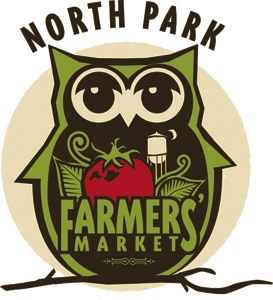
Why the need to relaunch? Says White, “The market had contracted and gotten smaller over the years and North Park Main Street thought it needed a new manager and a higher level of energy.”
According to White, the main problem in redefining the North Park Farmers Market brand was one of “…overcoming the public perception that it was a small market and not the best place to get farmers market (products).” Overcoming that perception involved, “Getting the word out through advertising and through promotions with North Park schools, along with a lot of social media. We have a very active Facebook page and Twitter. Also there was no Web site when we took it over, so we designed a Web site and now send out a weekly newsletter.”
The main risk White’s company faced was also a very human one. “All humans are adverse to change,” she says. “So you take the risk that your established customers may not like it, but overall our customers do.”
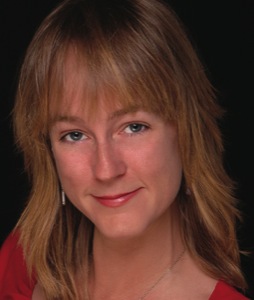
Of course, relaunching or redesigning a business is not the exclusive domain of retail outlets or large enterprises. Another local business entity that has relaunched is BRANDgfx, an advertising and design agency and Greater San Diego Business Association member. Like the other examples, staying current and in touch with customer needs was paramount in the agency’s relaunch.
Says Denise Wallace, creative director, “In today’s business world and economy it’s more important than ever to stay in touch with the ever-changing needs of clients and find that ‘niche’ area to serve their needs. Over the last several years, in providing graphic design services, I recognized my clients were looking for – and needing – more and more overall marketing support, including very specialized aspects such as social media and video marketing. It was a natural extension to rebrand and launch a full service advertising agency in order to help provide clients with a comprehensive solution to all their marketing needs.”
Did the relaunch help business? “Absolutely,” says Wallace. “Clients are definitely interested in the additional product/service offerings available now, and the new clients coming to us have found us because they’re specifically looking for a larger offering of products and services under one umbrella.”
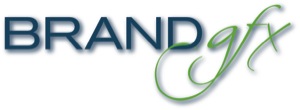
With all three companies, word of mouth has played a considerable role in their respective ongoing successes, as well as the use of social media. Of ways to communicate the relaunch of the design agency, Wallace says, “Primarily it’s been word of mouth with some advertising, and of course social media. BRANDgfx is suffering the ‘shoe-maker’s children don’t have any shoes’ syndrome. There’s a lot more we could be doing to communicate the transition, but we’re too busy focusing right now on taking care of our existing and new clients. It’s in our marketing plan though.”
As for the risks, the main one for Wallace involves keeping existing customers happy. As all businesses know, it is far easier and cheaper to keep existing customers than to find and secure new ones.
Says Wallace, “After more than 20 years in the business, clients have come to expect a certain level of personalized service from me so it’s a bit risky to be handing some of my long-time clients’ projects off to other team members, as clients still want to deal directly with me for the most part. Ultimately, it’s about staying involved as the creative director on each of my clients’ projects while helping them get comfortable working with a team instead of just one person. The risk most companies need to be careful of is to not throw out the baby with the bathwater. They have a brand already – presumably it’s an established brand – so the key is to build on that brand and ‘transition’ rather than thinking everything has to start from scratch.”
Looking at these local companies that have relaunched and redesigned their businesses, one thing is certain; in a continually evolving and uncertain economic climate, it is essential for a business entity to be continually evaluating the market. As a result, it is sometimes necessary to take bold and decisive action in order to maintain and even grow market share.










